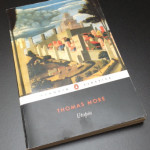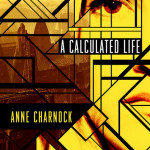Nine Worlds GeekFest #2: Why Is The Future So Binary?
Nine Worlds GeekFest explored sexuality and gender in science fiction in a fascinating range of debates including Why Is The Future So Binary? This super-packed-out event witnessed a lively exchange between the author-panelists and the attendees, who shouted out examples of gender diversity in SF literature. The event successfully drew together a list of fictional worlds featuring gender non-conformity as opposed to the usual girl-meets-boy scenarios. (More books for the To Read list!)
Alex Dally MacFarlane pointed to the classic example – Ursula K Le Guin’s novel The Left Hand of Darkness, set in a world without gender. ‘Le Guin pokes at gender binary,’ said MacFarlane. And chairing the discussion panel, Tori Truslow told the audience, ‘We need more! SF writers seem to think, “Le Guin did that so we don’t need to do it.”’
Truslow complained that writers have demonstrated their talents at world-building but their characters are invariably ‘definitely male or female.’ The Quantum Thief and The Fractal Prince by Hannu Rajaniemi were hugely imaginative but there were no gender variant characters.
Rochita Loenen-Ruiz pointed out that science fiction is mainly written in the English language. ‘There is no gender pronoun in English that is not binary.’ So how have writers negotiated this problem? A few examples were highlighted: Greg Egan uses the invented personal pronoun ‘ve’ for non-gendered AIs and asexual humans in his novels Distress and Diaspora; Marge Piercy adopts ‘per’ in Woman on the Edge of Time. Ian McDonald’s near-future novel set in India, River of Gods, adopts the gender-neutral pronoun ‘yt’.
There was a tendency to regard classic novels with non-binary characters as literary experiments, said Cel West. And Jude Roberts, cited Virginia Woolf’s Orlando as an example. Roberts recently completed a PhD on the Culture series by Iain M Banks . ‘Gender is a fluid concept in the Culture but in practice Banks wrote binary relationships, never homosexual, a few gender neutral.’
The panel hoped that SF and speculative fiction will offer readers more examples of post-gender societies and societies with gender diversity. Let’s see what transpires!
Here are a few examples mentioned by the panelists and audience:
Stars in My Pocket Like Seeds of Sand by Samuel R Delany. (Characters are ‘she’ until sexual attraction makes them a ‘he’.)
Shadow Man by Melissa Scot. (There are five genders in this novel but only male and female are legal.)
Mission Child by Maureen F McHugh
And Salome Danced by Kelly Esridge (The reader does not know if the narrator is male or female.)
The Female Man by Joanna Russ
Peter Hamilton’s mainstream SF includes gender variance.
Written on the Body by Jeanette Winterson, as a non-genre example.
Changes, a short story by Neil Gaiman (in which people can switch gender using a recreational drug.)
And I’ll add 2312 by Kim Stanley Robinson, which I reviewed here.
Tori Truslow will be posting a full reading list shortly and I’ll add a link here when it goes online.
Add your own suggestions for the reading list in the comments below!
PS Come and meet me on twitter here






Leave a Reply
Want to join the discussion?Feel free to contribute!